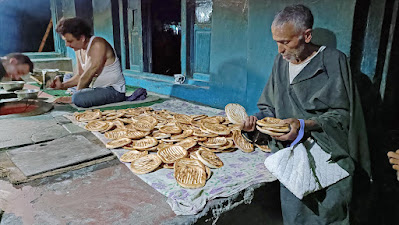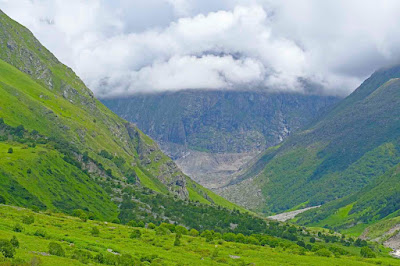Gurez Valley is enigmatic. the Valley doesn't know whether it wants to be stark and stony like Leh, or lush and green as in the rest of Kaskmir, so I guess it is a bit of both. Bare and rocky on one side and verdant pines on the other. But then I am getting ahead of myself...
About six hours from Srinagar, via Wular Lake (arguably one of the largest sweet-water lakes in the country) lies the Gurez Valley. After about an hour's drive along flat country we stated climbing after Bandipore till we came to the shrine of Peer Baba, where we stopped to matha teko, literally bow our heads to the ground in deference to the Peer.
Dawar Village is one of the few places with expert wooden joinery that we saw, the wood keeps houses cool in summer and warm in winter. As it is across the Razdan Pass which closes in winter due to the heavy snowfall, it is also one of the difficult villages to access and far off from the regular tourist track. Trekking tourism is just arriving.
There is a lot of wood used in construction here, till recently locals were permitted to use trees, now most houses are made of brick and mortar, with GI sheets on the roof. I was mesmerised by this wooden architecture and took many photographs.
Houses, anywhere in India, but more so in inaccessible places, use a lot of local material, but as connectivity has improved, modern materials are more evident. We saw heavy earth-moving equipment being used in construction. Most people near a road or suitable location, is making the ubiquitous homestay, a convenience of debatable value.
As the sun got lower a single conical feature was illuminated, Habba Khatoon. She was a lady who was brought up here and is the subject of much legend and lore. The banks of the Kishenganga are now very littered with the detritus of 'modern' life which the village is not equipped to remove. It is a matter of time that this beautiful place goes the way of so many hill-stations.Basav and I took a walk along the banks and bed of the Kishenganga, and a lot of fauna was evident can be seen from these recent pugmarks of a Red Fox.
A valley that offers true solitude can provide an exhilarating experience for the soul. Just don't go there alone...










































%20DSCF5555.jpg)










